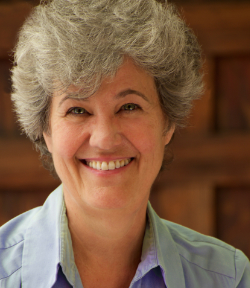
Photo credit: Diane Alancraig Photography
In the past several years, cultural diversity has become a major topic on the national arts agenda. Across the country, foundations, arts councils, advocacy organizations, nonprofit organizations, and universities alike have taken serious steps to explore, understand, and commit to fostering diversity, equity, and inclusion in the arts. Against the backdrop of the widely publicized violence against unarmed black citizens, and the anti-immigration rhetoric from the Trump administration, there is an increasing urgency to combat racial bias and commit to equality and inclusion in the arts.
What does this mean for our ICSOM orchestras? Pejoratively referred to as “the last bastion of dead, white, male Europeans,” are we so mired in our own history as to be incapable of change? Certainly the core of our 19th century repertoire is culturally specific, but that doesn’t mean we need to be.
Looking back to the late 19th century, when many of our American orchestras were founded, “a new class of urban white commercial elites established institutions–such as Metropolitan Museum of Art and Metropolitan Opera, Boston’s Museum of Fine Arts, and the Chicago Symphony Orchestra–to preserve and present art in the classical European canon.” (Clara Inés Schuhmacher et al., “Making Sense Of Cultural Equity”; Createquity.com) These early philanthropists hoped to promote civic pride and solidify America’s image as a civilized world power. But in so doing, they also solidified their own social standing and class status. The 1960s saw the first serious attempts to fund more culturally diverse arts. But philanthropic funding and government policy had already created a structural disparity between the Western European traditions and diverse arts struggling for funding and a place in our society.
I think it is difficult for us on the inside of our industry to see that our primary definition of “the arts” and its attendant infrastructure is biased towards our own cultural/racial tradition. It will require critical thinking, a willingness to experiment, and a larger vision of how our orchestras might look. Can we make room in our repertoire to diversify what we present? Can we make room on our stages to diversify whom we present? Who is making these decisions? Who will fund our non-profits?
The concept of diversity in our orchestras fundamentally challenges our understanding of what it means for us to play a constructive and responsive role in our communities. How do we respond to past and current inequities in our society and in the arts? We can no longer just ignore them. Our big budget, nonprofit symphonies and museums are too homogenous. While most of us already believe diversity to be morally righteous on its own, there are also solid business reasons for it. When we reflect the communities we serve—when we are diverse—our audiences will also be diverse. If we can successfully engage people in our communities by being inclusive ourselves, our orchestras will be more successful in the long run.
Across the nation, our ICSOM orchestras are already exploring their place in the diversity discussion and the arts ecology in America. Accessible ticket pricing, education programs, fellowship and mentoring programs, community engagement, hiring practices, board diversification, and programing are all being brought into play. But we will not achieve cultural democracy and equity employing the same structures and strategies that built our current inequitable systems. We must be willing to look critically at our prevailing practices and understand how we can change to accommodate our changing world. As musicians and artists, we have the power to sway hearts and minds, to transform lives. I believe it is our artistic and political responsibility to use that power to change our orchestras from the inside out.





